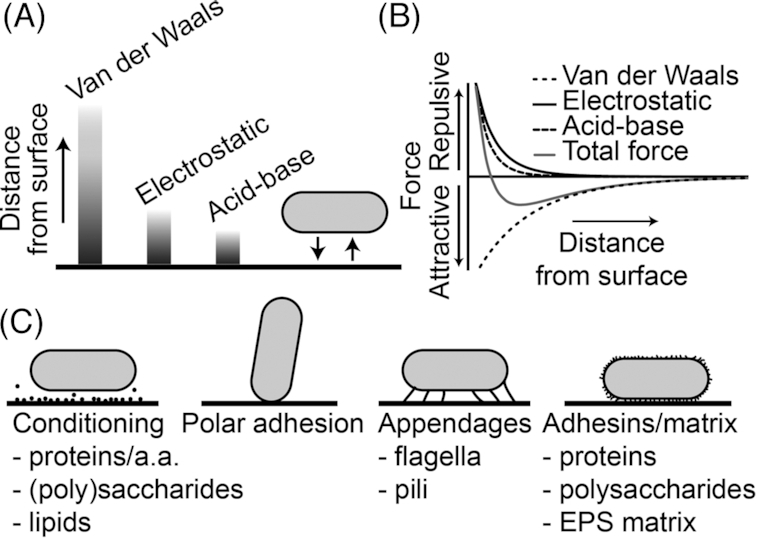Figure 2.

Summary of the forces involved in adhesion and strategies to overcome unfavourable surface interactions. (A), Schematic representation of forces acting on a bacterium when it approaches a surface, with the balance between attractive and repulsive forces keeping the bacterium at a small distance from the surface. (B), Adhesion forces as a function of distance from the surface. Van der Waals forces are attractive, electrostatic forces are generally repulsive and acid-base forces might be either. The total force reaches an energy minimum, which determines the separation of the bacterium from the surface (Busscher et al. 2010). (C), Strategies employed by bacteria to achieve a smaller separation from the surface than allowed by the initial energy minimum, which include (i) conditioning of the surface with e.g. proteins, amino acids, (poly)saccharides and lipids, (ii) polar adhesion, (iii) attachment of appendages and (iv) production of adhesive proteins and polysaccharides that are exposed on the cell surface.
